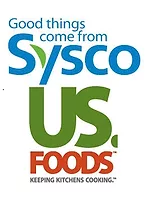Pandemic Pivots for Sysco and US Foods
How two foodservice distribution giants continue to impact the industry despite coronavirus challenges.

Early in the pandemic, Sysco donated labor, food, trucks and more to retailers requiring help with their supply chains due to consumer panic buying.
By any measure, 2020 has been a historically difficult year for foodservice distributors. COVID-19 wiped out business for foundational customers like restaurants, hotels, caterers, stadiums, schools and other volume foodservice clients starting in March, and even today, as states attempt to re-open amid the uncertainty of where the pandemic is heading, an argument could be made that foodservice distributors have had to continuously pivot more than any other cold chain segment to stay afloat.
Several distributors have transformed into trusted resources for restaurateurs requiring help to re-imagine and recover their beleaguered businesses. Some of those distributors even branded their assistance programs (see sidebar) to differentiate themselves among the competition for the range of services they offer clients.
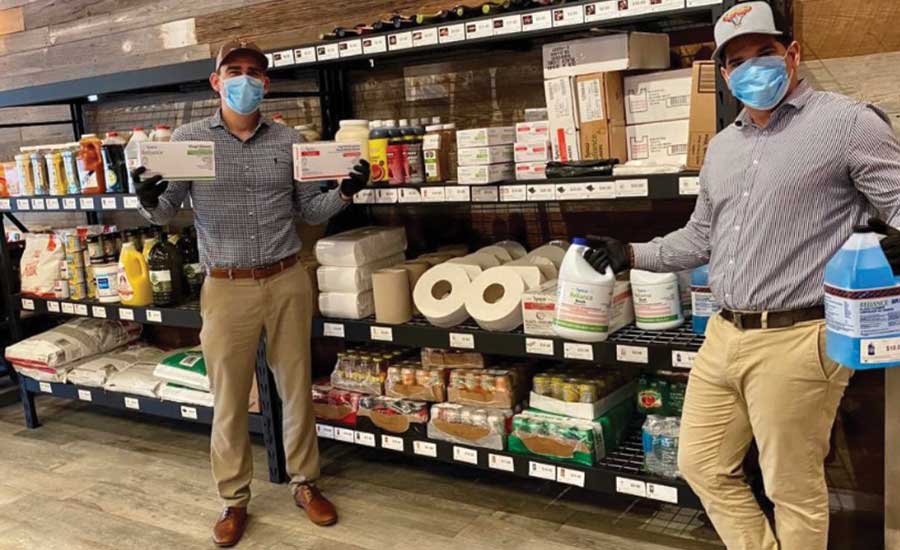
While dining rooms were closed in March and April, Sysco helped 16,000 restaurateurs pivot to pop-up markets selling ingredients and supplies, creating new revenue streams.
Since March, we’ve closely followed the two biggest foodservice distributors in the country—Sysco and US Foods—and have documented their evolution from distribution giants to multi-layered service providers amid the pandemic. We spoke with each company about their COVID-19 challenges on our From the Cold Corner podcast earlier this year, which you can listen to HERE. Recently, we caught up with Neil Russell, VP of corporate affairs at Sysco, and Jim Osborne, senior VP of customer strategy and innovation at US Foods, for an update on their efforts, and to find out what’s next for foodservice distribution in 2021. (These interviews have been edited for clarity).
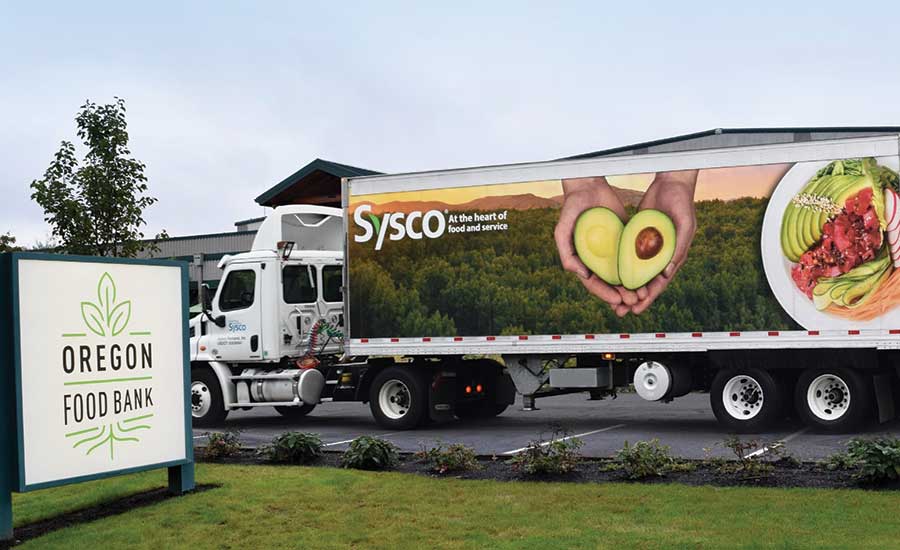
Sysco has donated 30 million meals since mid-March to charity organizations and food banks like this one in Oregon.
R&FF: What are some examples of successfully pivoting your business model in 2020?
Russell: In mid-January, Kevin Hourican joined Sysco as President and CEO. Under his leadership, Sysco took swift and decisive action after the pandemic was declared to reduce variable and structural costs, ensure liquidity, and pivot our business to maximize sales and help our restaurant partners pivot to a new selling model, which includes helping them with pop-up shops in the front of their dining room for additional revenue. The restaurant operators that engaged with Sysco on concepts like “marketplaces” are performing over 20% better than those that have not engaged those concepts. Our sales consultants have helped 16,000 customers set up marketplaces. We also have partnered with regional and national grocery retailers to provide labor, products and other distribution solutions to help alleviate strain in the food supply chain.
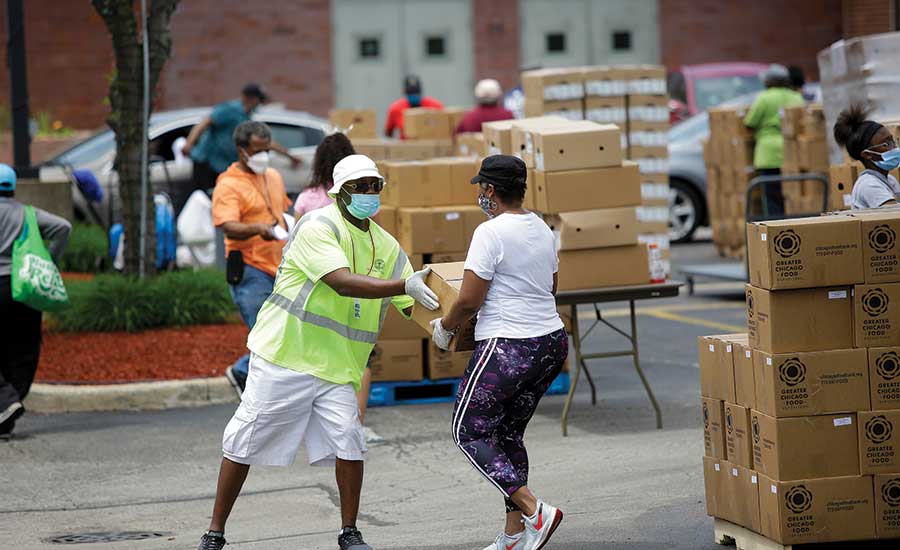
In June, US Foods donated $250,000 of products to the Greater Chicago Food Depository to help the organization create pop-up food pantries in the city’s South and West Sides.
Osborne: To aid retailers who were experiencing product shortages due to COVID-19, we announced in April we were supporting approximately 20 retail distribution partners such as national grocery chains, wholesale grocers and consumer packaged goods brands. We also deployed more than 700 US Foods distribution associates who were temporarily contracted to support these partnerships. These associates were primarily in warehouse roles such as selectors who choose product for shipping, and truck drivers who deliver product directly to a retailer’s distribution center or retail location. In addition to the distribution support, we also began selling much-needed product to retailers across the country as they were striving to maintain inventory given unprecedented consumer demand. Our partners include The Kroger Company; C&S Wholesale Grocers; Albertsons Companies; and Oklahoma-based Homeland grocery stores.
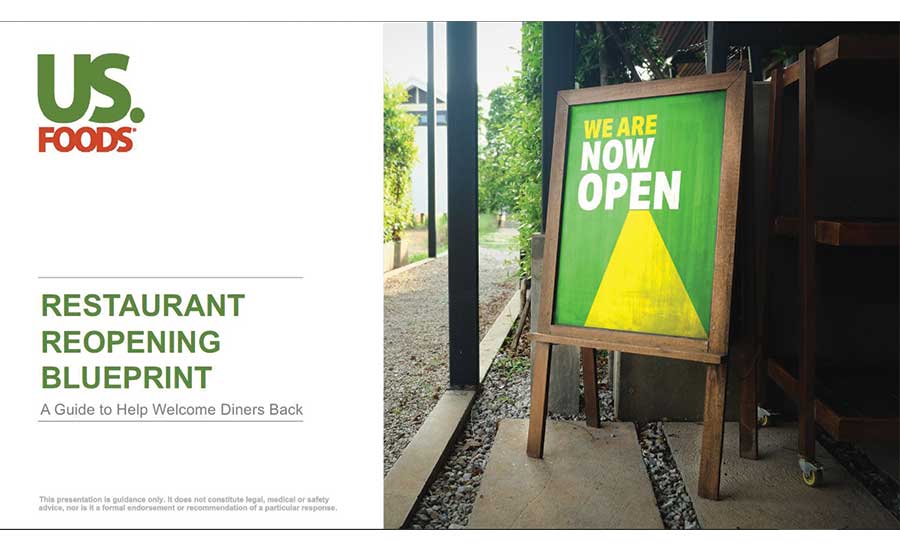
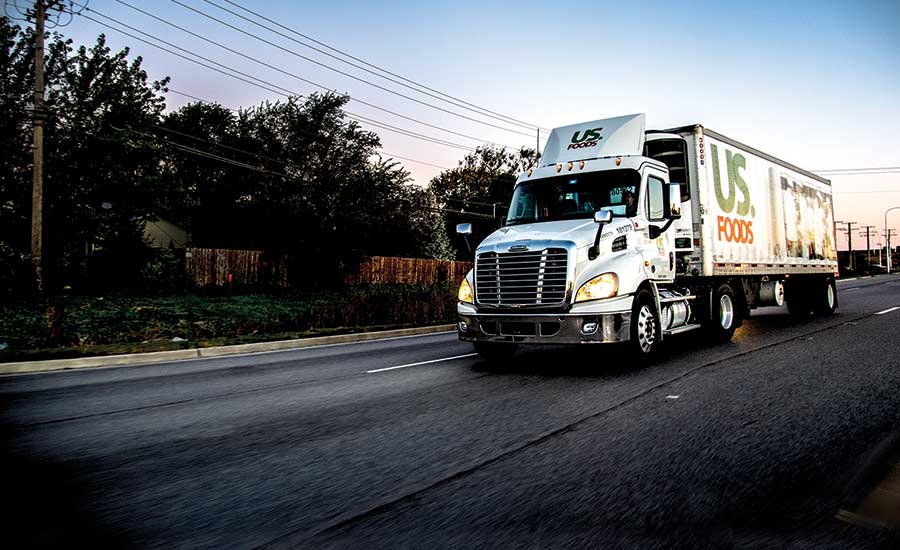
As states began lifting dining room restrictions, US Foods launched its Restaurant Reopening Blueprint guide, which included restaurateur resources for navigating state and local COVID-19 reopening requirements.
R&FF: What areas of your business have been thriving despite the pandemic?
Russell: Sysco has a strong presence in the healthcare sector providing many value-added services that routinely support our customers’ success. We’ve continued to support these customers throughout the pandemic. In addition, the reliability of our operations during the pandemic and the capabilities of Sysco have enabled us to win over $1 billion (annualized) of new business during this crisis.
Osborne: Our customers remain interested in new product innovations that are on-trend and versatile. Keeping up with trends is seen by operators as no less important in the post-COVID-19 world, with 82% of operators, in a recent Datassential survey, reporting that it’s as equally or even more important to remain on-trend. Our September product innovation launch, or “Scoop,” will focus on helping operators with today’s needs, with a particular focus on takeout and delivery, sanitation and labor-saving products.
Looking for quick answers on food safety topics?
Try Ask FSM, our new smart AI search tool.
Ask FSM →
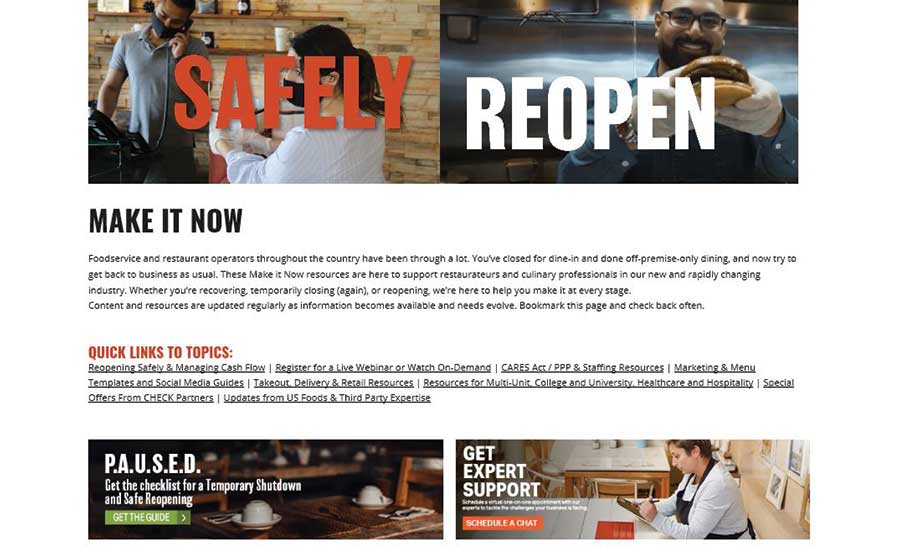
The “Make It Now” online hub by US Foods was an early pandemic pivot to help restaurateurs maximize takeout and delivery revenue streams.
R&FF: How are you guiding your customers through the pandemic, and how have those plans evolved in past few months?
Russell: Our initial focus was to help customers establish takeout/delivery service. We did this by helping them simplify their menus and establish a takeout website, providing easy-to-order bundles of to-go containers and sanitation products, and connecting them with third-party delivery services. We quickly added support for converting dining rooms to pop-up grocery markets, as mentioned earlier. We then focused on every aspect of reopening, including sanitation best practices, webinars about adjusting budgets in the current environment and how to implement touchless menu technology through use of QR codes. These efforts culminated in the establishment of Sysco’s Restaurant Readiness Tool, a first-of-its kind interactive simulation that provides an easy-to-use, comprehensive view of best practices, key considerations and essential supplies for operators re-opening their restaurants.
Osborne: As soon as dine-in restrictions began, we set-up an online hub called, “Make It Now,” that features resources to help our operators succeed when delivery and takeout became their primary revenue stream. As restrictions started to lift, we launched the US Foods Restaurant Reopening Blueprint guide, and gave away free reopening kits with masks and safety guidance posters as well as resources to navigate state and local COVID-19 reopening requirements. In August, we launched the US Foods Ghost Kitchen program. With ghost kitchens projected to reach a $1 trillion global market by 2030, according to Euromonitor, this trend allows operators to create new revenue streams. Ghost kitchens were growing in popularity before COVID-19 and we expect this trend to continue post-pandemic.
FOODSERVICE DISTRIBUTORS WITH BRANDED RESTAURANT ASSISTANCE PROGRAMS
- Sysco - Restaurant Readiness Tool
- US Foods - Restaurant Reopening Blueprint, and US Foods Ghost Kitchens
- Performance Foodservice/Reinhart Foodservice - Restaurant Restart
- Gordon Food Service - Trust20
- Shamrock Foods – Kitchentelligence Re-Opening Resources
R&FF: As an organization, how have you made an impact through community outreach in 2020?
Russell: Sysco donated 30 million meals across eight countries as part of its community response strategy to the COVID-19 pandemic. These donations were valued at over $100 million and included nearly 16 million pounds of fresh produce and approximately six million pounds of fresh dairy products. Sysco also loaned refrigerated trucks and facility storage space to increase capacity for local food bank distribution, and provided volunteer support for distribution efforts. Overall, Sysco supported more than 900 community organizations in their efforts to address hunger and food insecurity. Sysco also donated $150,000 to No Kid Hungry through its Take Out To Give Back campaign.
Osborne: US Foods has donated more than $21 million in food and supplies to food banks and charitable organizations since March. We’ve also collaborated with dozens of restaurants to donate products and logistics support to meal packing events for displaced foodservice workers, first-responders and health care workers. The company teamed up with Chef Rick Bayless to support his efforts to provide food and income relief for workers impacted by restaurant closures in Chicago, and is also working with World Central Kitchen, the nonprofit founded by Chef José Andrés, to aid the organization’s Chef Relief Team in the distribution of food and supplies across California, Arkansas and Washington, D.C.
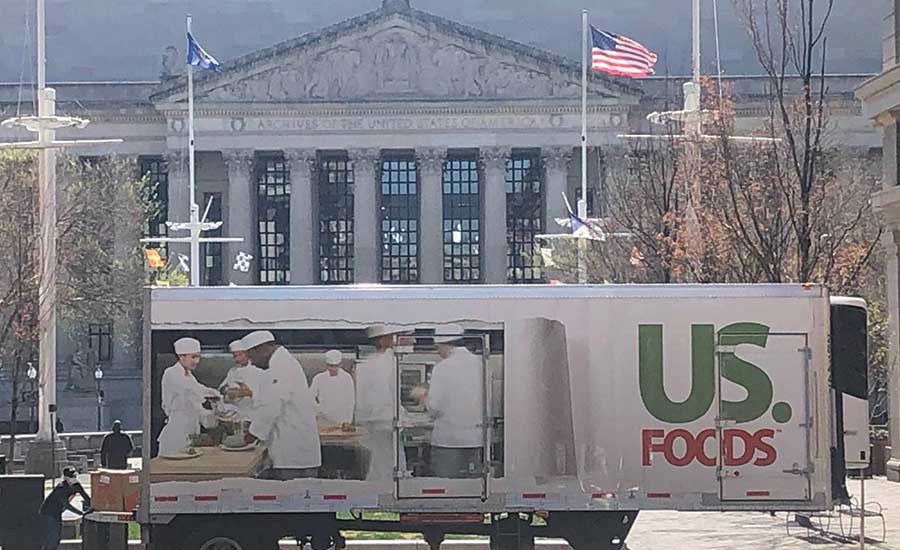
US Foods partnered with Chef José Andrés and his World Central Kitchen to distribute food and supplies in California, Arkansas, and Washington, D.C.
R&FF: What will foodservice distribution look like in 2021, and what changes from 2020 will have a lasting effect?
Russell: Food-at-home fatigue is real. Consumers are tired of cooking and cleaning every day and are eager to eat out again. As a result, we expect consumers to return to their dining out habits over time, but it’s difficult to predict the pace and timing of this shift. We expect that takeout and delivery services likely will continue to play an important part of the industry’s service capabilities well into the future.
Osborne: Providing ever-evolving product, technology and e-commerce solutions to meet operator pain points will certainly remain a priority. Staying closely connected to the customer’s business, anticipating their needs and acting as their partner, not just their food distributor, will always be a priority for us. The ability of our independent operators to navigate an ever-evolving landscape and quickly adapt with creative, value-added services has shown we can expect great things from them as we move into 2021.






